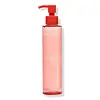What's inside
What's inside
 Key Ingredients
Key Ingredients

 Benefits
Benefits

 Concerns
Concerns

No concerns
 Ingredients Side-by-side
Ingredients Side-by-side

Cetyl Ethylhexanoate
EmollientPolyglyceryl-5 Dioleate
EmulsifyingGlycerin
HumectantHydrogenated Polydecene
EmollientSorbitol
HumectantWater
Skin ConditioningPentaerythrityl Tetraisostearate
EmollientPolyglyceryl-5 Oleate
EmulsifyingPolyglyceryl-6 Caprylate
EmulsifyingHelianthus Annuus Seed Oil
EmollientVitis Vinifera Seed Oil
EmollientCamellia Sinensis Seed Oil
HumectantZingiber Officinale Root Extract
MaskingAnanas Sativus Fruit Extract
Skin ConditioningCentella Asiatica Extract
CleansingLactobacillus/Papaya Fruit Ferment Extract
AbrasiveCalendula Officinalis Flower Extract
MaskingGlycyrrhiza Glabra Root Extract
BleachingCaprylyl Glycol
EmollientCitrus Junos Fruit Extract
Skin ConditioningChamomilla Recutita Flower Extract
MaskingCaprylhydroxamic Acid
Butylene Glycol
Humectant1,2-Hexanediol
Skin ConditioningEthylhexylglycerin
Skin ConditioningCetyl Ethylhexanoate, Polyglyceryl-5 Dioleate, Glycerin, Hydrogenated Polydecene, Sorbitol, Water, Pentaerythrityl Tetraisostearate, Polyglyceryl-5 Oleate, Polyglyceryl-6 Caprylate, Helianthus Annuus Seed Oil, Vitis Vinifera Seed Oil, Camellia Sinensis Seed Oil, Zingiber Officinale Root Extract, Ananas Sativus Fruit Extract, Centella Asiatica Extract, Lactobacillus/Papaya Fruit Ferment Extract, Calendula Officinalis Flower Extract, Glycyrrhiza Glabra Root Extract, Caprylyl Glycol, Citrus Junos Fruit Extract, Chamomilla Recutita Flower Extract, Caprylhydroxamic Acid, Butylene Glycol, 1,2-Hexanediol, Ethylhexylglycerin
Ethylhexyl Palmitate
EmollientSorbeth-30 Tetraoleate
EmulsifyingSynthetic Wax
AbrasiveDipentaerythrityl Hexa C5-9 Acid Esters
Skin ConditioningPolyglyceryl-6 Dicaprate
EmulsifyingGlycerin
HumectantSorbitol
HumectantCitrus Aurantium Dulcis Flower Oil
AstringentLitsea Cubeba Fruit Oil
MaskingCitrus Paradisi Peel Oil
MaskingCitrus Aurantium Bergamia Fruit Oil
MaskingLimonene
PerfumingHelianthus Annuus Seed Oil
EmollientLinalool
PerfumingSucrose Stearate
EmollientCaprylic/Capric Triglyceride
MaskingGlyceryl Stearate
EmollientMentha Viridis Leaf Oil
AstringentBarosma Betulina Leaf Extract
PerfumingBeta-Carotene
Skin ConditioningO-Cymen-5-Ol
AntimicrobialTocopherol
AntioxidantWater
Skin ConditioningButylene Glycol
HumectantDaucus Carota Sativa Root Water
Masking1,2-Hexanediol
Skin ConditioningDaucus Carota Sativa Root Extract
Skin ConditioningDaucus Carota Sativa Seed Oil
EmollientEthylhexyl Palmitate, Sorbeth-30 Tetraoleate, Synthetic Wax, Dipentaerythrityl Hexa C5-9 Acid Esters, Polyglyceryl-6 Dicaprate, Glycerin, Sorbitol, Citrus Aurantium Dulcis Flower Oil, Litsea Cubeba Fruit Oil, Citrus Paradisi Peel Oil, Citrus Aurantium Bergamia Fruit Oil, Limonene, Helianthus Annuus Seed Oil, Linalool, Sucrose Stearate, Caprylic/Capric Triglyceride, Glyceryl Stearate, Mentha Viridis Leaf Oil, Barosma Betulina Leaf Extract, Beta-Carotene, O-Cymen-5-Ol, Tocopherol, Water, Butylene Glycol, Daucus Carota Sativa Root Water, 1,2-Hexanediol, Daucus Carota Sativa Root Extract, Daucus Carota Sativa Seed Oil
 Reviews
Reviews

Ingredients Explained
These ingredients are found in both products.
Ingredients higher up in an ingredient list are typically present in a larger amount.
1,2-Hexanediol is a synthetic liquid and another multi-functional powerhouse.
It is a:
- Humectant, drawing moisture into the skin
- Emollient, helping to soften skin
- Solvent, dispersing and stabilizing formulas
- Preservative booster, enhancing the antimicrobial activity of other preservatives
Butylene Glycol (or BG) is used within cosmetic products for a few different reasons:
Overall, Butylene Glycol is a safe and well-rounded ingredient that works well with other ingredients.
Though this ingredient works well with most skin types, some people with sensitive skin may experience a reaction such as allergic rashes, closed comedones, or itchiness.
Learn more about Butylene GlycolGlycerin is already naturally found in your skin. It helps moisturize and protect your skin.
A study from 2016 found glycerin to be more effective as a humectant than AHAs and hyaluronic acid.
As a humectant, it helps the skin stay hydrated by pulling moisture to your skin. The low molecular weight of glycerin allows it to pull moisture into the deeper layers of your skin.
Hydrated skin improves your skin barrier; Your skin barrier helps protect against irritants and bacteria.
Glycerin has also been found to have antimicrobial and antiviral properties. Due to these properties, glycerin is often used in wound and burn treatments.
In cosmetics, glycerin is usually derived from plants such as soybean or palm. However, it can also be sourced from animals, such as tallow or animal fat.
This ingredient is organic, colorless, odorless, and non-toxic.
Glycerin is the name for this ingredient in American English. British English uses Glycerol/Glycerine.
Learn more about GlycerinHelianthus Annuus Seed Oil is the oil derived from the seeds of a Sunflower. Sunflower seed oil is non-fragrant. It is an emollient, meaning it helps to soften the skin.
Sunflower seed oil contains many fatty acids. The fatty acids found in sunflower seeds include (from highest amount to least): linoleic acid, myristic acid, palmitic acid, stearic acid, arachidic acid, oleic acid, and linolenic acid.
These fatty acids help the skin create ceramides. Ceramides play a role in repairing the skin barrier.
Helianthus Annuus Seed Oil helps moisturize the skin. This in turn helps the skin look more rejuvenated and smoother.
Sunflowers are rich in vitamin E.
Historians believe Indigenous cultures of North America domesticated sunflowers before corn. Thus they relied on sunflower oil for a variety of uses. One such use is moisturizing skin and hair.
Sunflower seed oil may not be fungal acne safe. We recommend speaking with a professional if you have any concerns.
Learn more about Helianthus Annuus Seed OilSorbitol is a sugar alcohol. It is a hydrating and moisturizing agent created from the reduction process of glucose.
Most sorbitol is usually made from potato starch. It is also found in fruits such as apples and pears.
As a humectant, Sorbitol helps draw water to the skin. This helps keep the skin hydrated. Sorbitol also helps create a thicker texture in products. You might find sorbitol in your toothpaste and other gels.
It is a non-irritating ingredient that is great for those with dry skin.
Sorbitol is a prebiotic. It helps promote the growth of healthy bacteria on your skin. The bacteria on your skin form a microbiome. This microbiome helps protect your skin from infection and harmful bacteria.
Learn more about SorbitolWater. It's the most common cosmetic ingredient of all. You'll usually see it at the top of ingredient lists, meaning that it makes up the largest part of the product.
So why is it so popular? Water most often acts as a solvent - this means that it helps dissolve other ingredients into the formulation.
You'll also recognize water as that liquid we all need to stay alive. If you see this, drink a glass of water. Stay hydrated!
Learn more about Water